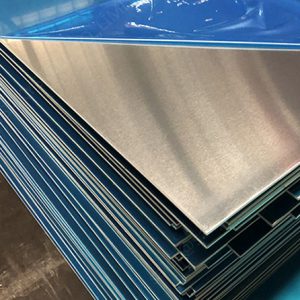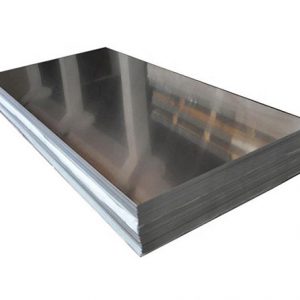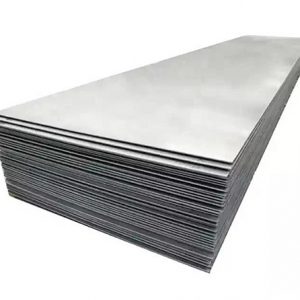3003 aluminum sheet is a popular aluminum alloy that is widely used in various applications due to its excellent properties. It is a non-heat-treatable alloy with a high resistance to corrosion, making it an ideal choice for outdoor use.
The chemical composition of 3003 aluminum sheet plate is made up of 1.0-1.5% manganese, 0.12% copper, and the remainder being aluminum. The addition of manganese makes the aluminum alloy stronger and more durable. Additionally, the copper content improves the alloy’s conductivity and thermal properties, while the aluminum content provides the lightweight and corrosion-resistant properties that make it a popular choice for various applications.

Advantages of 3003 aluminum sheet plate
One of the most significant advantages of 3003 aluminum sheet plate is its high resistance to corrosion. The alloy has a natural resistance to rust and other forms of corrosion, making it an excellent choice for outdoor use. It is also resistant to many common chemicals, making it a popular choice for the chemical processing and storage industries.
Another advantage of 3003 aluminum sheet is its excellent formability. It is a highly malleable material that can be easily formed into different shapes and sizes, making it a versatile choice for various applications. It is also easy to weld, making it a popular choice for the manufacturing and construction industries.

Features of 3003 aluminum sheet plate
3003 aluminum sheet also has good strength properties, with a tensile strength of 130-150 MPa and a yield strength of 115-120 MPa. This makes it suitable for applications where high strength is required, such as in roofing and transportation.
In addition to its excellent properties, 3003 aluminum sheet plate is also available in a range of different tempers, including H14, H16, H18, H22, H24, and H26. Each temper has its unique properties and characteristics, making it essential to choose the right temper for a specific application.
The physical properties of 3003 aluminum sheet can vary depending on the thickness and temper of the material. The most common temper for 3003 aluminum sheet is H14, which means that it has been strain-hardened and partially annealed. The typical yield strength for H14 temper is 145 MPa, and the typical ultimate tensile strength is 185 MPa. The elongation at break for H14 temper is typically around 10%.

Application of 3003 aluminum sheet plate
3003 aluminum sheet is widely used in various applications, including the production of cooking utensils, automotive parts, heat exchangers, chemical processing equipment, roofing, and building facades. It is also used in the manufacturing of electronic components, such as printed circuit boards and transformers.
3003 aluminum sheet plate is a versatile and useful material that offers excellent properties, making it a popular choice for a wide range of applications. Its high resistance to corrosion, excellent formability, and good strength properties make it a popular choice for various industries and applications.






